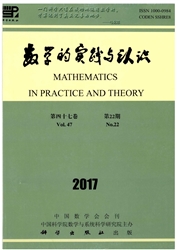

 中文摘要:
中文摘要:
关于为在 1980 年代和 1990 年代的瓷器精力紧张的戏剧的衰落负责的主要因素有可观的争论。然而,很少详细分析被做了在 20022005 期间在精力紧张解释变化。在这份报纸,我们使用结构的分解分析(SDA ) 把精力紧张分解成五决定因素:精力输入系数,技术系数(Leontief 反的系数) ,由产品的最后的要求结构,由范畴的最后的要求和最后的精力消费系数。我们然后进一步分解二个系数,精力输入系数和技术系数,进结构和真实系数。实验学习在 2000 经常的价格从 1987 ~ 2005 基于 energy-input-output 桌子被执行。结果证明在 1987 和 2002 之间,精力输入结构在精力紧张说明大多数衰落。然而,由产品的输入结构和最后的要求结构解释在 2002 和 2005 之间的精力紧张的增加。
 英文摘要:
英文摘要:
There has been considerable debate about the major factors responsible for the dramatic decline of China's energy intensity in the 1980s and 1990s. However, few detailed analysis has been done to explain the fluctuation in energy intensity during 2002-005. In this paper, we use the structural decomposition analysis (SDA) to decompose energy intensity into five determining factors: Energy input coefficient, technology coefficient (Leontief inverse coefficient), final demands structure by product, final demands by category and final energy consumption coefficient. We then further decompose two coefficients, energy input coefficient and technology coefficient, into structure and real coefficient. Empirical study is carried out based on the energy-input-output tables from 1987 to 2005 in 2000 constant price. The results show that between 1987 and 2002, energy input structure accounts for most of the decline in energy intensity. However, the input structure and final demands structure by product explain the increase of the energy intensity between 2002 and 2005.
 同期刊论文项目
同期刊论文项目
 同项目期刊论文
同项目期刊论文
 期刊信息
期刊信息
